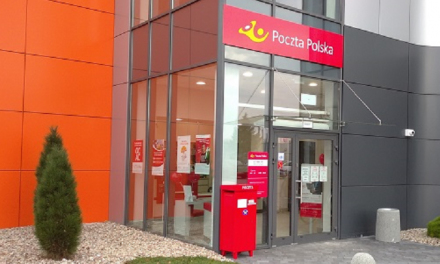
Exciting developments in e-commerce
Colum Joyce, Director of Strategy, IMRG, writes for World Mail Review 2008.
The evolution of e-commerce
$ 1000,000,000 is what online ecommerce is projected to be worth by 2010. Today over 1.6 billion people worldwide are regular Internet users. Online retail is now a strategic, commercial, and financial component of many big brands and pure play companies.
B2C e-retail has emerged as a critical component of domestic and international volumes for posts and private delivery companies. Its rising importance is driving ongoing investment and consolidation in many markets across the world.
Significant changes are occurring in both the markets and the behaviour of consumers. Crucially, retailer ecommerce growth rates continue to outstrip those of the high street. As an example, in the UK high street retail has grown at below 2% whilst online retail sales have grown at an average of over 40%. E-retail is becoming even more important to consumers as the credit crunch evolves into a downturn or recession. People are more careful and search out the best price, service, and availability.
Implications for Transporters
For postal, couriers, express and logistics companies this should be a golden opportunity to gain more business and expand their networks. However, the growth in B2C shipments is not matching the growth rates in actual e-retailing. Research by IMRWorld.org has identified a number of trends that need to be considered:
Consumers are now more loyal and buy more from their favourite retailers.
They are shipping multiple orders in each package.
Consumers are spending more per order but shipping fewer orders which helps to explain the difference in B2C growth rates as between retailers and transporters.
Online consumers who receive catalogues and then shop online spend up to 25% more than those who do not receive catalogues.
These trends all point towards the emergence of increasingly sophisticated online consumers who have a better understanding of multi channel shopping and who have identified ways to minimise the costs of transport.
IMRWorld.org also found that there is a significant trend towards substituting physical goods for digital ones. This is especially true in music and video sales. In the same IMRWorld.org report 27% of respondents had changed to online downloads instead of ordering physical DVDs or CDs. Similar trends were found in educational books, software and games. All these categories have been key generators of packages for the post, courier and express companies. They are now going online.
In addition there has been a very rapid growth in the purchase of online gift vouchers. Respondents said that this was far cheaper than purchasing the item and paying for transport to the recipient. Every gift voucher, especially where it is redeemable in a store, is a lost shipment for a transporter. It is also highly lucrative for retailers, as in the US where over 30% of vouchers are unredeemed after threee years and the funds are then allocated to the bottom line.
Demographic Trends
Changes in demographics are also impacting the shape and form of B2C retailing and fulfilment. The retailer home fulfilment networks of companies such as IKEA and Tesco are built on the online demand for their goods by time poor, dispersed consumers. As the present generation of young internet shoppers becomes independent and sets up home, familiarity with online shopping will drive further growth in non discretionary spends such as food and other essentials for home life.
The e-retail users in the 45 – 65 age group will also be an important driver of B2C ecommerce. They will face issues with pension levels and the rapidly rising cost of living especially associated with car ownership. Decreased mobility and internet familiarity, combined with budget constraints, will make them prime future volume drivers for e-retail and home delivery.
The general view is that e-retail will continue to grow globally. This is undoubtedly true but markets, especially in the UK, France and the US, will begin to mature in the coming five years.
Elsewhere there is a temptation to view the millions of online consumers in high growth countries such as India and China as major opportunities for cross border or domestic e-retailers. In reality both these markets have very low average income levels and very low basket sizes. It will be decades before per capita spending online reaches even 20% of levels in Europe and the US. That said, highly affluent niches do exist and these are potent opportunities for volume growth for e-retailers.
One group that is often overlooked in e-retailing planning is migrants. There are over forty million migrants in Europe and five million of these are from the newer EU countries in the Baltic and Balkan regions. In the period 2004 – 2005 the National Statistics Office in the UK reported that 120,000 UK citizens migrated to Spain and France alone.
These migrants offer a major e-retail opportunity in two ways. The first is that when they migrate they can be offered goods and services from their home markets. The second is that returning migrants, such as Polish and Baltic citizens going back home, are more familiar and comfortable with e-retail. This provides an opportunity to maintain a commercial relationship with them when the return to their original country.
Cross Border Opportunities
There are other influences that can cause rapid changes in the e-retailing patterns of a consumer group. Canada is a good example of this. The very favourable rate of the Canadian dollar to the US dollar has driven a rapid rise in Canadian cross border e-retailing on US sites. Traditionally up to 30% of Canadian e-retail was cross border with the US. In 2007 it reached levels of over 50%. Interestingly a key driver was the failure of the US retailers to adjust their Canadian dollar prices in line with the strengthening Canadian dollar. Consumers left Canadian dollar sites and shopped on the lower priced US ones.
Similarly, the influence of regulatory confidence building can be seen in the growing importance of cross border trade in Europe. According to an EU report issued in 2008 (available on the IMRWorld.org site), between 2003 and 2006 the percentage of EU online consumers shopping across borders jumped from 12% to 26%. For e-retailers the consequence is that 17% of online revenues came from EU cross border and 12% from non EU consumers. It is evident that cross border e-retail is both more important and far more diverse than previously suspected.
Future Developments
So is everything rosy in the e-retail garden? Certainly not. Significant issues still exist in areas such as security, data protection, returns, contracts and consumer protection. Equally the environmental issue is likely to have a major influence on the shape of e-retailing and fulfilment in the coming years. One of the key questions will be the appropriate balance between the efficiency gains from competition and the environmental costs of that competition. When it comes down to products there are also interesting challenges such as could we see a situation where any product that can be provided in a digital format cannot be provided on physical media?
In the coming years major changes will occur in the ability of consumers to use mobile devices for shopping. Falling roaming prices, cheaper data costs, and integration of features such as remote payments to phones, will begin to enable shopping when travelling. Goods and services sourced when abroad will be automatically scheduled for home delivery via minimal data entry mobile phone interfaces.
The key e-retail question for postal, courier and express transporters is how volumes are likely to grow and what the customer expectations for delivery are.
Volumes will grow but not in step with the revenue growths that e-retailers enjoy. More sophisticated and loyal e-retail consumers are likely to continue to spend more but ship fewer shipments. Gift vouchers and digital substitution will also eat into projected shipment growth rates.
Offsetting these trends is the emerging ubiquity of the internet and its use in many countries. More and more Internet users and online shoppers enter the market every day. Mobile shopping will become a strategic channel of e-retail. This will drive volume growth. In addition, established brands and new entrants to the market will expand the scope and scale of the e-retail choice to the online consumer and this will also fuel volume growth.
However, it will be flexibility, service richness and value for money that will be key to attracting and keeping consumers for the delivery services of postal, courier and express companies. The basics of the delivery business will remain the same irrespective of changes in technologies, economic situation or customer taste. Managing the changes, and the nature of the commercial responses to them, will be the core challenges and opportunities for the industry in the coming years.













